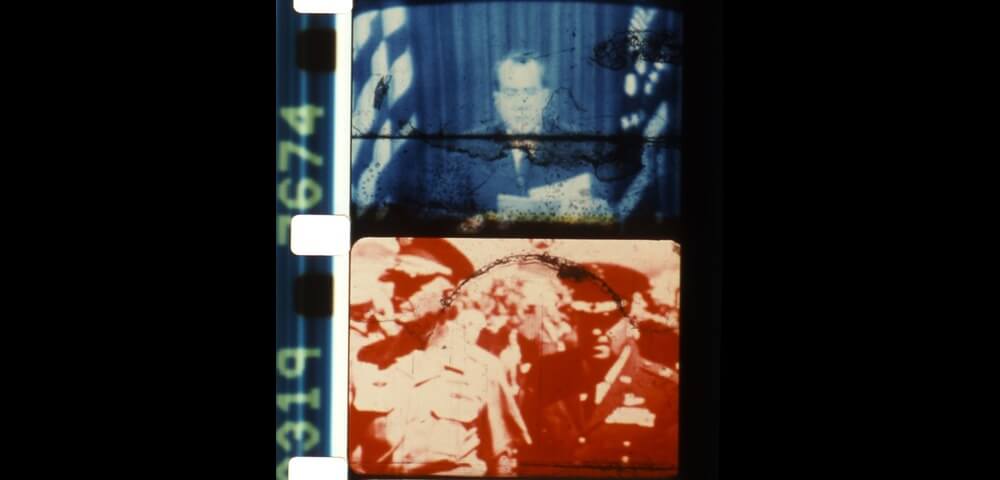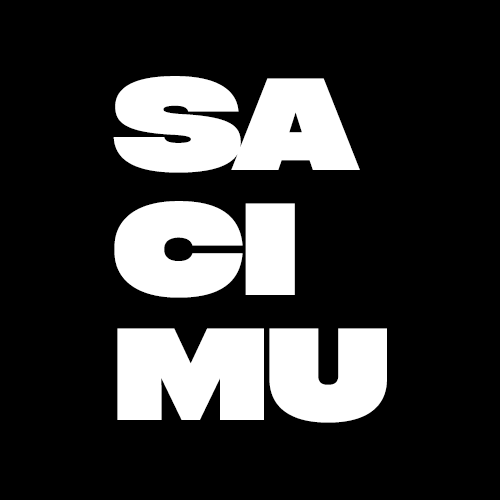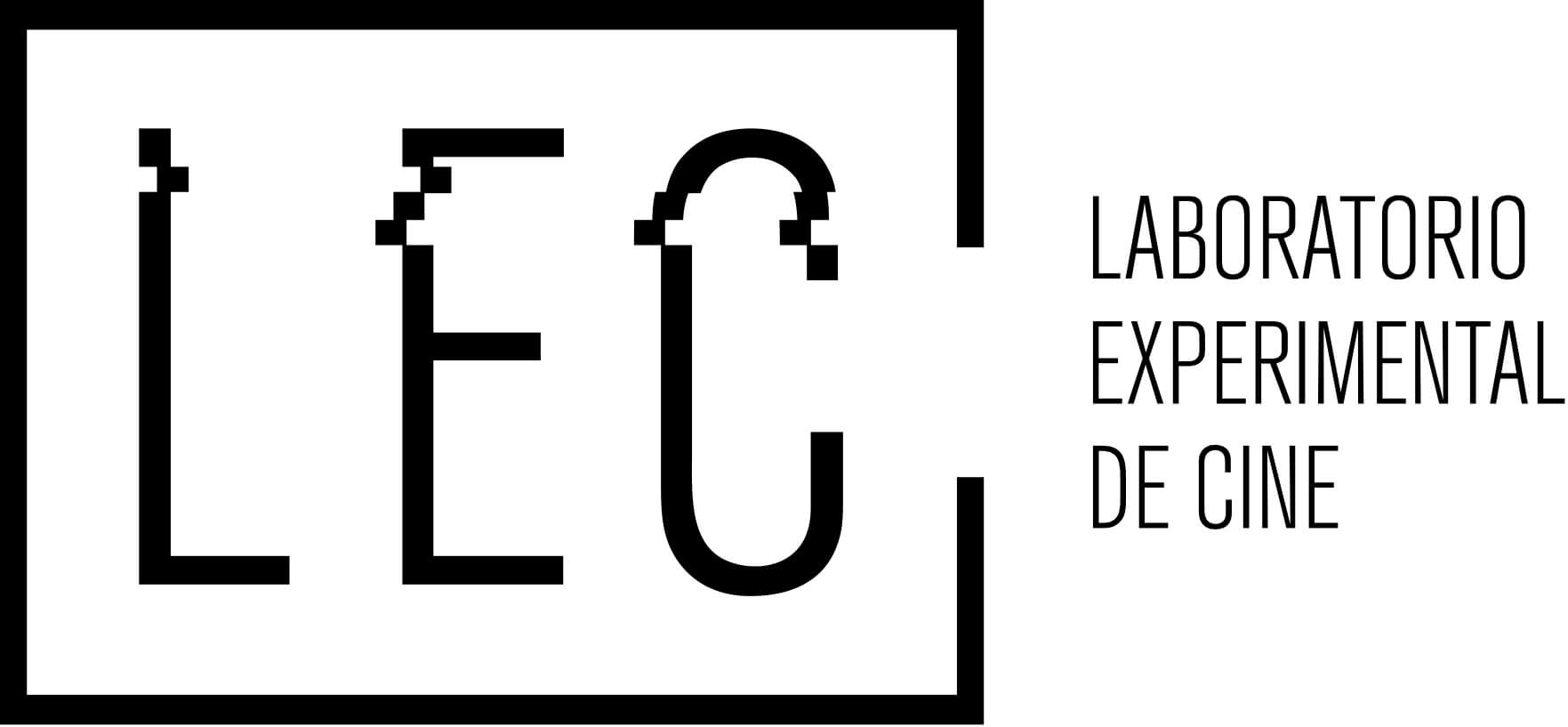
CONTENT WARNING: These films contain flashing lights which may not be suitable for those with photosensitive epilepsy.
Saul Levine does not stop. He is an uncompromising and relentless filmmaker whose work reflects his experimental verve. As far back as the 1960s, he has shown that film is a material object, that it can be twisted, warped, chopped, and stretched to produce immersive and challenging experiences. On April 4, we are pleased to host Levine—alongside a troupe of filmmakers and thinkers close to him—for a night honoring his legacy.
In addition to the impressive body of work Levine has assembled over the decades, he has imparted a love and understanding of experimental filmmaking to younger generations as a professor at the Massachusetts College of Arts and Design, among them Annalisa D. Quagliata Blanco. Her work championing his films, alongside Byron Davies and Lumia Lightsmith, led to the presentation of a Saul Levine Retrospective that toured Mexico last year. Tonight we present an abridged version of that retrospective, with Levine in person to discuss his work.
The program notes for the Saul Levine retrospective in Mexico are available here.
All 16mm prints are from Levine’s personal collection.
FRIDAY, APRIL 4 – 7 PM
STAR FILM
1969, 15 mins, 16mm
“I began this film in 1968. I had painted, scratched, scraped and bleached film since I began making films in 64/65 mainly in regular 8 and usually with photo-chemical representations. In this film I decided to paint and bleach 16mm clear and black leader thinking from the beginning that I was making an emulsion that light would shine through. I was making both positive and negative images that could be contact printed. The film is made from a painted and bleached original a little over 100 ft that has been contact printed onto b&w and color positive and negative film. I used stars, circles and crescents to ground the viewer and make clearer the meditation on positive and negative space. I also wanted to make a completely camera-less film.” — Saul Levine
BIG STICK / AN OLD REEL
1973, 10 mins, 16mm
“Beginning in 1967, with roughly a dozen short films under his belt, Levine spent six years reediting 8-mm prints of the Chaplin shorts Easy Street (1917) and In the Park (1915), incorporating television images of an antiwar protest in which the Boston filmmaker participated. The result was The Big Stick/An Old Reel (1967-73), his self-tutorial in montage, the ascesis of narrative, and the beauties of caustic rhythms. In the early stages of that work’s construction, Levine was teaching filmmaking at Tufts University, in Medford, Massachusetts, but he would soon be fired, if not specifically for his role in occupying a campus building during a protest over the dismissal of an African-American secretary, then for his political activism generally.” — P. Adams Sitney
NEW LEFT NOTE
1982, 27 mins
“‘New Left Note is a study of radical politics in radical film form.” — Marjorie Keller
IS AS IS
1991, 3 mins, 16mm
“A portrait of a mother with her arms full in the backyard bathing her twin babies. As if the early spring light sings and dances. Later the father cooks a fish. Marjorie Keller is the mother.” — Saul Levine
FIVE-MINUTE INTERMISSION
AS IS WAS
1995, 4 mins, 16mm
“This film was shot the same weekend as Z (Zee Not Zed), when Stan Brakhage was visiting University of Rhode Island, where Marjorie Keller was teaching at the time. They get some coffee, then go for a walk on a beach in an old whaling harbor.” — Saul Levine
FALLING NOTES UNLEAVING
2013, 13 mins, 16mm
“Falling Notes Unleaving is made from footage gathered in the fall of 2012 and edited in early 2013. Anne Charlotte Robertson, friend and fellow Super8 filmmaker, died. I attended her funeral and filmed the burial of her ashes. She was famous for her diary films and I thought it important to honor her work by filming an event that she could not. The burial took place in a wonderful old cemetery in Framingham, Massachusetts, which lightened a sad event. The film also includes footage shot in the mountains outside of Portland and the streets of Cambridge and Somerville in Massachusetts. It is not a diary. The title and the film reflect Gerard Manley Hopkins’ poem ‘Spring and Fall.’ Luther Price, Bob Brodsky, Tara Nelson, Gordon Nelson, Liz Coffey, Heather Green, her daughter Rosealee, her dog Blue, and many other people and animals appear in this film.” — Saul Levine
NOTE TO PATI
1969, 7 mins, 16mm
“Note on snowstorms in February-March ’69. The restoration of the landscape begun to show friends on west coast violent beauty of this period. Childhood memories, snowball fights, sledding, etc., and how I felt about Medford where I live kept entering into the film. The principal birds in the film are the blue jay and the crow, both beautiful, smart and ruthless.” — Saul Levine
LIGHT LICKS: PARDES: COUNTING FLOWERS ON THE WALL
2018, 13 mins, 16mm
“Light Licks are a series of films I began in 1999. The films are made frame by frame, often by flooding the camera with enough light to spill beyond the gate into the frame left unexposed. Light Licks are ecstatic flicker films inspired by jazz and mystic visionary practice, and extend my interest in the ways film can be a medium of visual improvisation. ‘Pardes’ is the ancient Persian word for walled garden. In Hebrew and Aramaic it means paradise, heaven, the garden of Eden, the peak or terminus of ecstatic visionary, trance, flight, wild flowers, morning glories, an urban jungle an eden for a petite Tyger.” — Saul Levine
LIGHT LICKS: AMEN
2017, 6 mins, 16mm
“A stark portrait of my father at daily morning prayers, to which I respond, AMEN.” — Saul Levine
NOTE TO TETSUA
2018, 1 min, 16mm
Moon flight
loud silence
soft dark
hard light
a Ray o gram
made with a camera
out of sight
— Saul Levine
Special thanks to Saul Levine, Byron Davies, Lumia Lightsmith, Stephen Cappel, and Kathy Del Beccaro. Davies and Lightsmith co-programmed this screening, in addition to adapting and writing the program notes. Davies’ research project, “Materialism and Geographic Specificity in the Philosophy of Film,” forms the basis for these screenings, which are supported by Salón de Cines Múltiples. Additional support was provided by Laboratorio Experimental de Cine.


